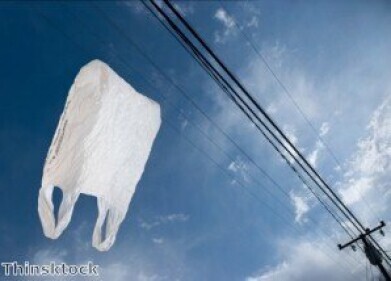Waste Management
The Devastating Price Whales Pay Because of Plastic Pollution
Apr 15 2016
From the blubber used as insulation to the spermaceti wax harvested as fuel to the ambergris added to high-end perfumes and fragrances, whales have long been hunted by humans for their abundant resources.
Fortunately, we have curbed our whale-hunting tendencies over the years to the point that only a handful of civilisations around the world still persecute these gentle giants. Unfortunately, we appear to still be decimating the sperm whale population today, albeit in a more roundabout way – plastic pollution.
A Whale Massacre
In January of this year, 29 sperm whales washed up on various beaches around the North Sea. A significant proportion of these were found on the shores of Schleswig-Holstein in Germany (13 specimens, 44%) and were found to contain debris resulting from our over-consumption and irresponsible disposal of plastic.
Among other items found in the bellies of those 13 sperm whales, scientists conducting the necropsies found a piece of plastic from a car measuring 70cm in length and a fishing net 13m wide. The appalling state of the whales’ stomachs pointed to the undoubtable cause of their death and begged the uncomfortable question, how much plastic is in our oceans and what is it doing to marine populations?
According to the environment minister for the Germanic state where the 13 whales were found, we are torturing and sometimes even killing these huge but vulnerable creatures. “These findings show us the results of our plastic-oriented society,” explained Robert Habeck. “Animals inadvertently consume plastic and plastic waste, which causes them to suffer, and at worst, causes them to starve with full stomachs.”
Whales not Alone
Furthermore, it’s not just animals the size of sperm whales which are susceptible to poisoning themselves through our carelessness. “Although the large pieces will cause obvious problems and block the gut, we shouldn’t dismiss the smaller bits that could cause a more chronic problem for all species of cetacean – not just those who suction feed,” said Nicola Hodgins, a member of the Whale and Dolphin Conservation society.
Earlier this year, photographer Chris Jordan documented the discovery of albatross chicks, whose remains were so bloated with the vast amounts of plastics they had ingested that they died from malnutrition. The plastic, which took the form of bottle tops, six-pack rings and cigarette lighters, was mistakenly fed to their young by unknowing parent birds.
What Can Be Done?
Though attitudes towards creatures of the deep such as whales, dolphins, sharks and other sea-dwelling fish, birds and mammals have changed over the years, we still need to adopt a more responsible stance on plastic disposal methods. On an individual level, this means recycling and reusing as much as possible.
On an industrial scale, determining the value of waste materials as fuel feedstock could potentially kill two birds with one stone. By using substances which have traditionally been disposed of carelessly (including plastics, metals, cardboard, paper and other common waste items) as a source of energy, we can reduce the amount of waste we generate whilst simultaneously finding a cleaner, more sustainable fuel source to power our homes, businesses and vehicles.
Events
Apr 18 2024 Shanghai, China
Apr 22 2024 Hannover, Germany
Apr 23 2024 Kuala Lumpur, Malaysia
Apr 24 2024 Sao Paulo, Brasil
May 05 2024 Seville, Spain













